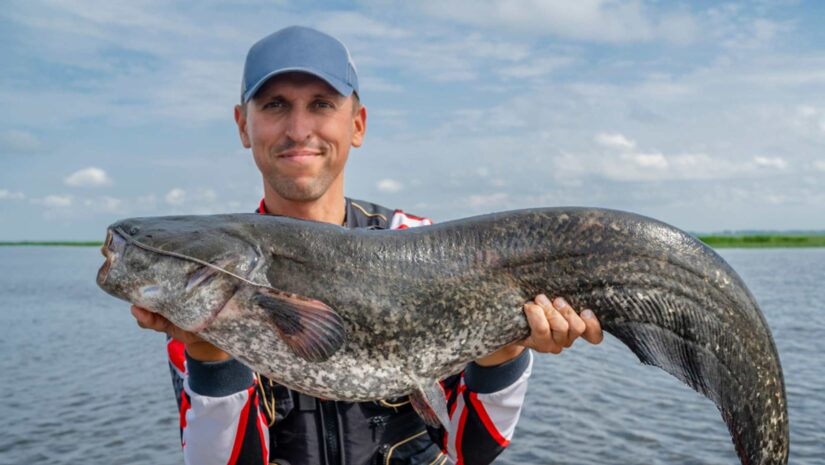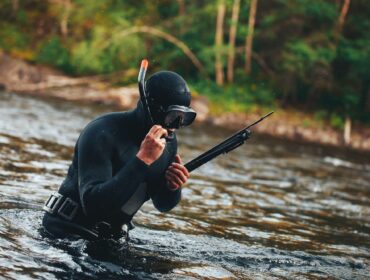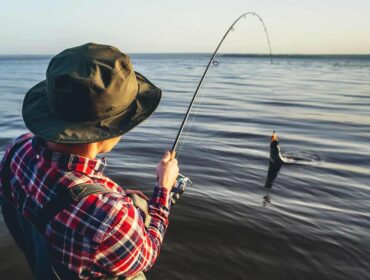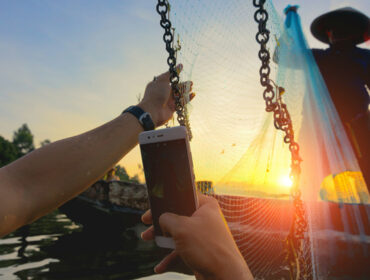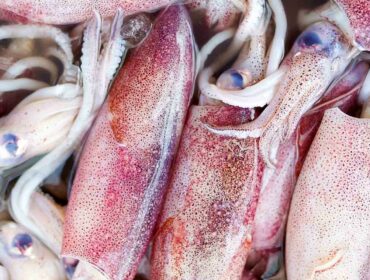Catching catfish, whether for sport or commerce, is both fun and challenging. Catfish can grow to enormous sizes and can be found in many rivers and lakes throughout the United States. While they’re not the easiest fish to catch, reeling them in is worth the effort as they’re prized in the world of angling and delicious treats.
This article will help you identify the most common types of catfish, introduce you to the right fishing gear and bait, and walk you through the most basic catfish fishing techniques.
Identifying the Common Types of Catfish
Before venturing into the open waters to reel in your first catfish, you must first know what it is that you’re looking for. Familiarize yourself with the different species of catfish and identify the ones that can be found in your area.
Blue Catfish

The blue catfish is the largest species of catfish in the United States, with specimens weighing up to 150 pounds and growing up to 65 inches long. These catfish are bluish grey, making them stand out from other common species of catfish. They’re native to the Mississippi River drainage basin but can be found in other southern states and along the Gulf Coast. Blue catfish are predators and enjoy a varied diet which can include frogs and freshwater mussels.
Flathead Catfish

Flatheads are the second largest species of catfish in the States and can grow up to 61” long and weigh up to 125 pounds. They’re also predators and will eat almost anything smaller than them, making them respond well to live bait. Flatheads are often found in lakes and large and slow-moving rivers. These fish are not the easiest to reel in as they can put up a fight. The effort is well worth it as they’re considered to be one of the tastiest catfish to dine on.
Channel Catfish

The channel catfish is the most commonly sought species of catfish by fishermen. They can be found in the lower regions of Canada, the Northern and Eastern United States, as well as northern Mexico. Channel catfish thrive in both large and small rivers and vary in size according to their location. They’re a popular fishing target as they do not require any specialized equipment to catch.
Choosing the Best Gear for Reeling in Catfish
As with any other type of fishing, you must have both the basic fishing gear and the more specific gear needed to successfully reel in catfish. Listed below are some recommended fishing gear that you’ll need when fishing for specific kinds of catfish.
Rod

Choosing the right fishing rod is essential when fishing for catfish. A medium or medium light spinning rod can be used to catch small to medium-sized fish such as channel catfish.
Aim for a medium heavy spinning rod for bigger fish. The rod should be at least seven feet long and have a rigid backbone with a reliable flex to help you reel in larger catfish. Larger handles are also preferred when catching bigger catfish as this gives you more leverage and grip.
Line
Your choice of fishing line will depend on what kind of catfish you’re fishing for as lines vary in strength and flexibility. For channel and other smaller catfish, a 12- to 14-pound monofilament line can do the trick. For heavier catches, like blue or flathead catfish, going for a 20- to 30-pound line is advisable. Having a colored line is also useful so that you can monitor the movement of your line easily even if the water is not so clear.
Reel

Rule of thumb: invest in a heavy-duty reel as it will last you longer. Don’t expect cheap reels to last long when catching 20-pound fish as they pack a mean punch. Get high-quality fishing reels if you want to fish for catfish regularly. You’ll not only save money by investing in a reel that can withstand numerous catches but will also increase your catch rate.
Hooks
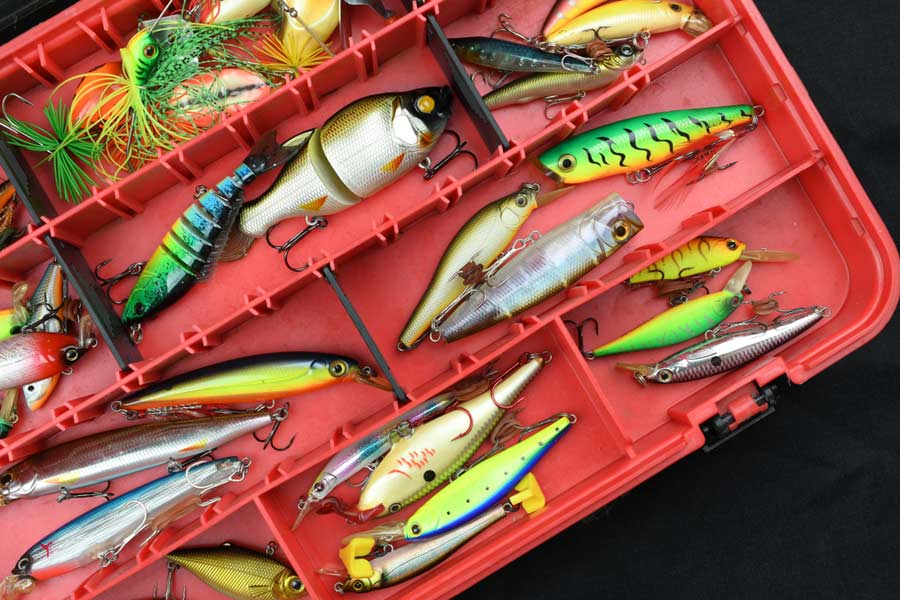
Your choice of hook will also depend on the type of fish you’d like to catch. Hooks can vary in shape and size. Ranging from single to double and treble to circle, each type of hook serves a different purpose. Treble hooks are more suitable for catching channel catfish, while circle hooks are suitable for catching blue and flathead catfish. Since catfish are aggressive and willing biters, investing in high-quality hooks is vital if you want to keep your catch once it bites.
Catfish Fishing Techniques

Choose When You Will Fish
Seasonality and the time of day play a big role as to how many catfish you can catch in an outing. Not all catfish are the same in terms of when and where they are most active. Catfish are generally more active early in the morning but are also out and about at night. While catfish are more likely to be active in warmer water temperatures, they rarely surface when the sunshine is intense. Go fishing either early in the morning or at night, and during overcast weather or relatively warmer times of the day to yield better catch rates.
Notice the Water Around You
Paying attention to the water is key, as the slight movements in the water can make or break a great catch. Catfish like to dwell in eddies, covers, or areas where the current hits large logs or rocks, giving them a resting spot safe from the current. These covers and resting spots are usually found near river banks, dams, and other man-made structures.
Use Different Types of Bait
Identify the types of bait that the catfish in your region are attracted to. Slices of goldeye and herring, for example, release oils that are especially attractive and effective for catching channel catfish. Flathead catfish, on the other hand, respond well to live bait.
It is also important to match the size of your catfish bait to the size of fish that you want to catch. Bigger fish snatch small bait easily while small fish nibble on it without biting down on the hook, yielding you nothing.
Use Pungent Jigs and Bait
Having the right kind of bait is not sufficient if you want to catch lots of catfish. Presentation is key if you want the catfish to notice your bait. Take note as to what the catfish in your area are feeding on so that you can mimic it. Cut bait is more suited in waters with a little current while whole bait is preferred when fishing in slow and steady waters. The key is to make your bait look as realistic as possible and make it appear to move through the water.
Jigs are useful tools as they act as weights, letting your bait move deeper into the water and giving your bait a fish-like appearance. Adding a pungent smell to your jig is vital to attract even more fish to your bait to increase your chances of hooking one.
Have Good Leverage Once It Bites
Once you’ve attached the bait to your hook and set up your rod and line accordingly, cast your line to the best position. Use weights or floats if needed while keeping a tight line. Once you feel the bite, soften your line and reel it in quickly. Walk back and utilize your space if you’re fishing from the shore. Avoid letting the line lose tension. Once it’s near enough, you can try and pull it out by hand or using a net. Keep this in mind whether you’re fishing from the shore or on a boat. It is also vital that your boat is anchored firmly to keep your leverage.
If fishing from a boat, it is crucial that the boat is well anchored. Remember to examine and measure the catfish once it’s completely out of the water to see if it’s within your local fishing rules and regulations.

